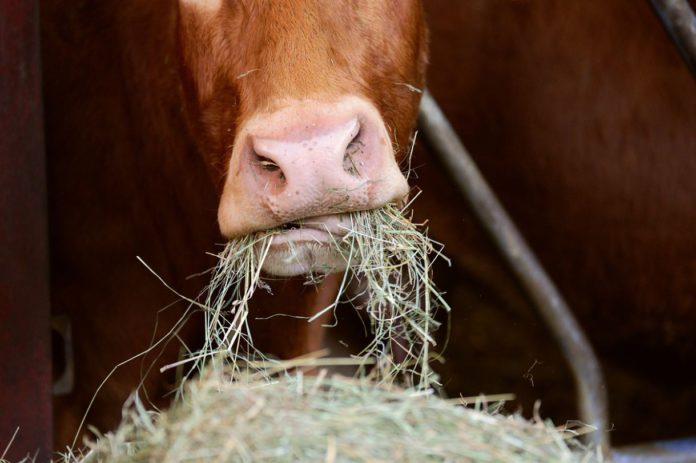While this has been an exceptionally challenging year in all our lifetimes with so many changes required to the way we live, work, and socialise, it is remarkable that in the agricultural world the basic principles and tasks involved in managing a cattle farm through the winter remains constant, writes John Galvin, B&T Drystock Adviser, Teagasc Galway/Clare.
Feeding:
With ample supplies of grass throughout the summer grazing period, if spring-calving suckler cows are fed to appetite on 65 DMD silage they should be in good condition this year.
However, first and second calvers should be penned together if possible and fed 70 DMD silage/65 DMD + 2kg meal.
Savings can be made when feeding dry suckler cows with 70-75 DMD silage as they can be restricted to 80% of intake. This equates to almost 2 bales/cow over the winter period.
Weanlings/stores ideally need to be gaining 0.6-0.7kg live weight gain per day. To achieve this, target ad-lib 70-75 DMD silage + 1-2kg of a high protein (14-16% Crude protein) concentrate. Trying to make savings here will prove costly in the long-term.
Winter finishing of beef animals requires a combination of high-quality silage (75 DMD) and high energy low protein (12% crude protein) concentrates.
If high-quality silage is not available, it is more cost-efficient to feed ad-lib concentrates and a clean source of roughage such as straw.
A fast finish over 6-8 weeks is the most efficient for forward beef animals. Start with 2-3kg gradually building up to 5-6kg depending on the sex, breed, and conformation of animal being fed.
Beef prices:
The aim is to have finishing animals gaining a minimum of 1kg live weight gain per day. This translates into 0.65-0.70kg carcass per day.
At current beef prices of 370c/kg base for an R3 steer plus 20c (in-spec bonus) and the cost of silage and concentrates being 15c and 30c/kg dm respectively, this weight/carcass gain is at breakeven point at best.
Therefore, it is essential that cattle are assessed regularly as they come close to slaughter. Ideally, this should take place in the crush, checking the flesh cover on the tail, loin, rib, brisket, flank (and cod in the case of bulls).
It is too costly to be laying down high-fat deposits that will be penalised on the factory floor.
Parasite control:
Liver fluke, stomach worms, lungworms, lice and mange are the main parasites that cause ill health and ill thrift in cattle. All cattle should be treated accordingly in consultation with your vet coordinating withdrawal periods for marketing cattle for sale both through mart and factory.
There has being a lot of faecal sampling carried out this autumn by participants in the BEEP-S. This data should be utilised when planning your fluke treatment programme.
With resistance issues prevalent with many drenches used for the treatment of worms and the real threat of anti-microbial resistance due to overuse and over-reliance on drug intervention, it is very important to use products prudently.
Maintaining a healthy herd:
We are reminded daily that “the fight against COVID 19 is in our hands”. This involves basic hygiene, limiting contacts, and maintaining distance. These are essential principles to apply in maintaining a healthy herd.
- Avoid buying in, where not possible, quarantine animals;
- Avoid sharing trailers/equipment between farms;
- Maintain good stock proof fencing;
- Use vaccinations in consultation with your vet;
- Use anthelmintics and flukicides prudently;
- Practice good biosecurity.
Financial assessment and farm planning:
Christmas is upon us and with the strong likelihood of a Covid vaccine rollout in 2021, there are reasons to be positive. However, the noise of Brexit may drown out the festive cheer with far-reaching economic consequences.
In a no-deal scenario, Irish beef may become un-marketable on the UK market due to proposed tariffs. With no immediate substitute, high-value market for Irish beef producers, income forecasts indicate falls of as much as 40% in the absence of income supports. This could be the burning platform that will bring monumental change to the Irish cattle industry in 2021 and beyond.
Carrying out a Teagasc e-Profit Monitor could be a very useful way of assessing the financial health and strength of your enterprise. This may form a basis for making important financial decisions.





